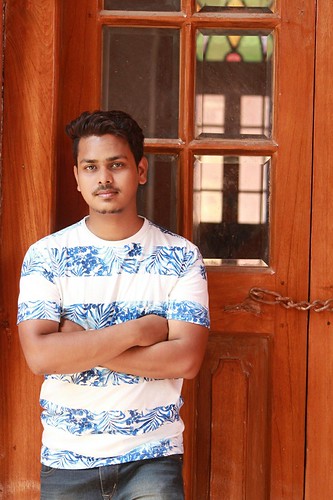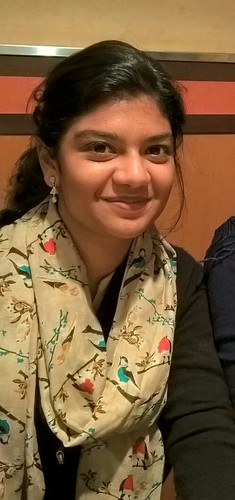By Charu Bahri, TwoCircles.net
Danish Malik is no stranger to challenges. Hard pressed for money, he tutored his way through graduation and continues to tutor children to support himself through a post-graduate program in commerce at Aligarh Muslim University. With no way to make his tutoring income stretch to pay for skills courses that he would like to pursue, which he knows will count for a lot when he enters the job market, Danish turned to his university for a scholarship—and got it. “I will owe my career to Aligarh Muslim University,” he said.
The association between higher education and achievement is what drove Syed Ahmad (popularly known as Sir Syed) to establish the Mohammedan Anglo-Oriental (MAO) College, the original form of AMU, in 1877. In higher education, he saw a great opportunity to secure a better future for Indian Muslims.

With the passage of time, the Muslim community formed the Muslim University Association and the Muslim University Association Committee to work towards elevating MAO College to university status. Their effort bore fruit when MAO College was made a university by an Act of the legislature in 1920 and was called Aligarh Muslim University.
Close to a century later, the cause of educating Muslim youth is still as relevant.
While Muslims make up 14% of the India’s population as per the last census, the community accounted for barely 4.4% of students enrolled for higher education courses last year, according to the 2014-15 All India Survey on Higher Education.
To make a point: students of Scheduled Caste (SC) background, also a disadvantaged minority, occupied 13.4% seats as against the community accounting for 16.6% of the country’s population. The signifiantly lower disparity between SCs share of population and higher education seats is a happy outcome of 15% reservation for the community. Notably, in 1994, SC or Dalit students accounted for only 8.5% of higher education enrolments despite accounting for the same population share.
Of all Indian Muslims enrolled in higher education, 1% study at AMU by virtue of its minority status, which exempts it from the reservation norms binding central universities, favouring Scheduled Castes, Scheduled Tribes and Other Backward Caste, and instead allows it to reserve seats for the linguistic or religious minority community behind its establishment. Not that AMU has adopted reservation for Muslims. It only practices internal reservation, the practice of offering seats in higher level courses to students successfully completing its lower level courses.
Now with the government raising questions over AMUs minority status, the fate of thousands of Muslim seats hangs in the balance. No one can predict the outcome of a withdrawal of the minority status.
Earlier this year, Attorney General Mukul Rohatgi said: “As the executive government at the Centre, we can’t be seen as setting up a minority institution in a secular state.”
To conclude that the government had “set up” AMU, Attorney Rohatgi drew on the settlement of a 1967 case wherein the Supreme Court nullified AMUs minority university status, arguing that MAO College, the Muslim University Association and the Muslim University Association Committee had all surrendered their existence when AMU was created in 1920.
Rohatgi and the central government refuse to acknowledge a subsequent amendment in 1981, clarifying that the Act of 1920 was not intended to establish a new institution by the name of AMU, but to give the institution already in existence, that is MAO College, the right to award legally valid degrees. In no way did the Act of 1920 increase government involvement in the administration of the institution.
“In deleting the expression ‘establish’ from the title and preamble of the 1920 Act, parliament corrected the Supreme Court’s factually wrong stance in 1967 and gave history its due accord, and it was completely within its right to do so,” said Mustafa Faizan, vice chancellor, NALSAR University of Law, Hyderabad, an alumnus and former dean, faculty of law and registrar of AMU. “AMU is on the Union List, a list of subjects parliament has legislative competence on.”
Casting doubt over the constitutionality of the 1981 amendment detracts from the greater role envisioned for AMU—the higher education of Muslim youth, who are desperately looking for high quality education and opportunities to get ahead in life.
“I am extremely grateful for having a world class university in my home town,” said Usman Obaid, a third year engineering student at AMU, hailing from Aligarh.
Obaid acknowledges that he got into engineering with some help from AMUs internal reservation policy, having joined one of AMUs 10 schools on campus (see box) for his higher schooling. Still by no means did internal reservation make getting a seat in AMUs higher education courses a cakewalk for him.
While internal reservation has helped to transition many of AMUs schools students into its colleges, many make it to less rigorous courses and students like Obaid who aspire to pursue a professional course must still sit for the entrance test and get a competitive score.
An internal student scoring about 70-80 can be hopeful of getting into engineering, anything less would not do. Whereas an external student would need to score about 100-110, Obaid explained.
Maskoor Ahmad Usmani, who also pursued his higher schooling at AMU after bagging one of 500 seats that 60,000 odd candidates competed for, made it to the university’s prestigious medical school as well as cracked the all India medical school admission test.
“Despite having other options, I decided to join AMU for the uncomparable tehzeeb (culture) on campus and academic distinction,” said Usmani, now a third year medicine student.
What is this tehzeeb?
“India has educational institutions run by Christian missionaries as well as some that adhere to Hinduism. Just as those conduct prayers in their respective religions, but don’t force students to convert, so AMU has a Mulim identity, colossal culture and traditions, which make it a minority university, not the administration or rules,” said Obaid.
AMUs tehzeeb encourages Muslim parents to send their girls to AMU to study as well as inspires young women to enrol.
Sehar Nafees’s parents live in the Gulf but chose AMU for her to pursue a graduate degree, and now a post graduate programme in tourism administration. “Living in a hostel on the campus is comfortable and most importantly, safe. It also means a lot to me that AMU is well known for its high academic standards,” said Nafees.

When Samreen Fatima sought to pursue a post graduate degree in science, the bright student from Chandausi in district Moradabad secured a place in a prestigious Delhi university as well as in a college in south India. Still she opted to study at AMU because “I wanted to join a college or university that would help me grow technically, socially and morally,” she said. AMU provided all that and more: “It is prestigious and has so much to offer in the field of science.” Needless to say, her selection of a first home away from home brought a smile to her parent’s face.
And the same tehzeeb ensures the comfort level of students of other faiths—like Chiranjeev Gupta, a third year engineering student from Kolkata.
Gupta, a Hindu, is in a minority at Aligarh Muslim University (AMU) where about 70% of the 20,511 students enrolled in higher education are Muslims. Being one of a few doesn’t bother Gupta at all.
“AMU is cool,” he says, with great enthusiasm. “It offers us plenty of opportunities to lead a rich student life. Academics as well as the amenities here are top class, 24×7 Wi-Fi, a swimming pool, a gym, a horse riding club and all kinds of sports.”
Like every student who looks up to his alma mater, Gupta equates AMU with achievement—“I am the only one from my college selected for the Google Summer of Code, a global program to bring more students into open source software development; 5000 of us had applied.”
Academics and merit, not religion, rule supreme at AMU.
In fact, over the years, the university has cut internal reservation from 75% to 50% only for the sake of quality.
“By the 1960s, it was felt that internal reservations had compromised the all India image of AMU and severely compromised the quality of students as the pool of institutional students was small,” said Mustafa.
As a result, today, “Muslims make up less than half of the class of professional courses like biotechnology, medicine and engineering,” according to Dr Rahat Abrar, consultant, Public Relations, AMU.
It is a pity that questions that have arisen about AMUs minority status can be traced back to the university’s bold move to cut internal reservations in 1965, a decision which didn’t go down well with potential beneficiaries. Ensuing campus turmoil led the government to clip the powers of the university’s administrative body and increase the number of government nominees to it, and inspired a fringe element to question the validity of these measures in court without consulting AMU.
Despite this upset being settled in 1981, the central government is pressing on with who-knows-what agenda, recently, withdrawing an appeal filed by the previous UPA government challenging Allahabad High Court’s pronouncing AMU a non minority institution, ostensibly to file an affidavit claiming the same stance as the erstwhile court.
AMU: Starting at the very beginning, with schooling
A modern school education grants eligibility for higher studies, something Indian Muslim youth fall terribly short in, a paper proves.
In 2010, about the same proportion of schooled Muslim youth, those eligible for higher education, was in college as schooled youth from other socio-religious groups, said the 2012 study Education and Employment among Muslims in India: An Analysis of Patterns and Trends.
What this means is that the uptake of higher education by eligible Muslim youth was on par with that by say, Hindu Upper Caste youth or Hindu Scheduled Caste youth. Still Muslims lag behind in college and university enrolments because too few Muslims are passing out of school.
“High drop-out rates among Muslims, especially after middle school are to blame for the community’s small pool of youth eligible for higher education,” said the study author Rakesh Basant, professor of economics at Indian Institute of Management, Ahmedabad, and a member of the Sachar Committee, which studied the condition of Muslims in India in 2006.
To help more Muslim youth qualify for higher education, there is a need to focus on supply side interventions, “such as making available scholarships for students and decent schools in the neighbourhood,” said Basant.
This puts the onus on modern schooling, which is very much an AMU objective.
AMU runs ten schools offering modern education, eight on the campus—one for visually challenged children—and two in Aligarh city. At 14,374, the school enrolments include students of all faiths and economic backgrounds.
In 2013, AMU instituted a bridge course to help madrasa students pursue higher studies and get admission into other universities, not necessarily AMU, just another example of affirmative action by the university to enhance the prospects for Muslim youth.

